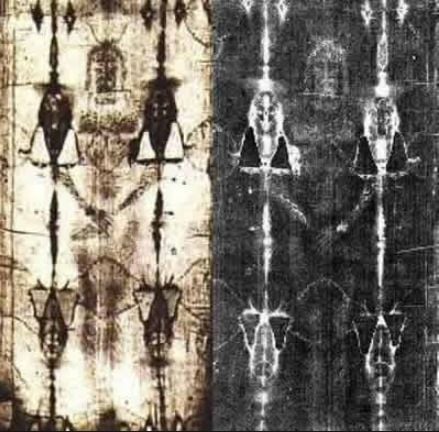The Shroud of Turin
-
 Geoffrey Waugh
Geoffrey Waugh
| Wednesday 30th of October 2024 02:31:12 PM (UTC)

The Shroud of Turin is the most intensely investigated religious artifact in history. Many scholars believe it may be the linen cloth that was wrapped around Jesus’ body. Its faint image shows the horrendous wounds of a crucified man with wounds exactly matching the description of Jesus’ death.
Physicist, and founder of the Shroud of Turin Research Project (STURP), John P. Jackson, has proposed that the image features of the Shroud of Turin were produced by radiation emanating from the body in the Shroud at the moment of resurrection.
The shroud of Turin is a 14.3 foot by 3.7 linen cloth bearing the faint double image (ventral and dorsal) of a naked man who appears to have been crucified (together with burn marks and water stains resulting from fires, one in 1532).
There is a puncture wound on his left wrist (his right wrist is hidden from view), and there are puncture wounds on his feet as if they were pierced by a nail or nails. The back of the man is covered with over 120 scourge marks, apparently imposed by the Roman instrument of torture known as the flagrum (a whip with two or three thongs to which were attached small balls of lead). There is a large puncture wound on the right side between the ribs from which blood and a watery serum have flowed. The image resides only on the top-most fibres of the threads with which the Shroud is woven, and it is a negative image.
Although very faint when viewed as a positive, the image becomes much clearer when darks and lights are reversed.
[Carbon dating in 1988 from a tiny corner of the Shroud dated the sample between 1260 and 1390 AD, but it is argued that the sample came from repaired cloth.]
-
Tags :
- Shroud of Turin ,
- Turin ,
- Resurrection ,
- Jesus ,
- Jesus Christ
Start the conversation
Become a member of TxtTale to start commenting.
Already a member?
